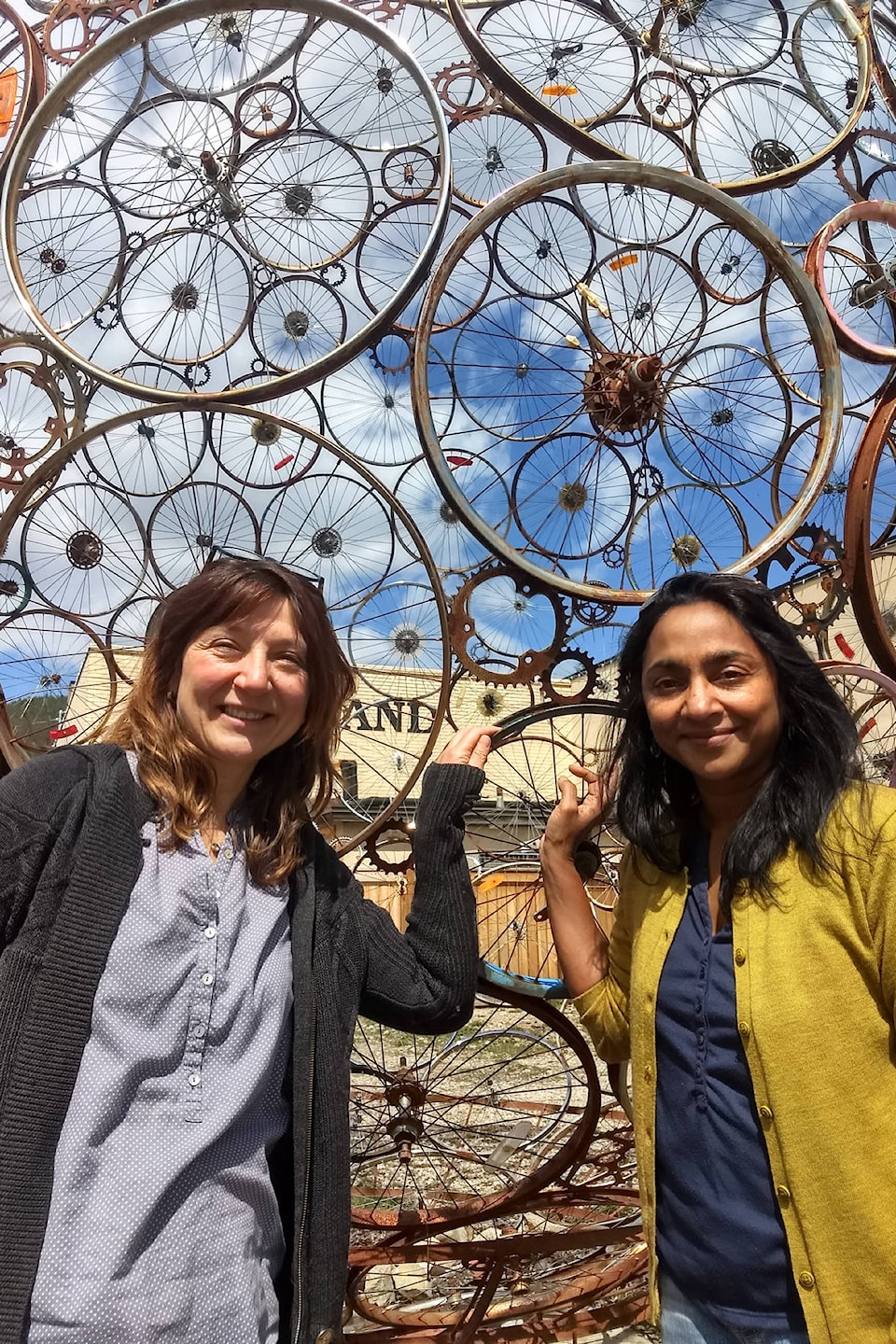The people who brought public art to Rossland’s downtown have some big plans afoot.
And with the help of new funding from the Columbia Basin Trust, it will mean some exciting new works on the city’s downtown streets- and perhaps on its walls as well.
“We’re excited,” said Rossland Arts Council President Theshini Naicker.”It’s definitely a passion for us to bring art out into public spaces where it’s there for everyone to enjoy — old and young — and also show the vibrancy of the town.”
Last week the CBT announced a new three-year, $750,000 program called the Public Arts Grants. Under the program, Basin communities can purchase and install original works of fixed art like murals, sculptures or mosaics.
The program supports purchases of work by artists in the Basin area. And all the art must be installed in well-travelled spaces that are accessible by all.
“Public art benefits residents and visitors by creating a vibrant atmosphere,” said Wayne Lundeberg, Columbia Basin Trust Strategic Advisor, in a news release. “Public art makes our communities more engaging, enhances our economies and adds to quality of life. It also helps communities showcase local Basin-based artists.”
Basin arts councils, local governments and First Nations are eligible to apply. The grant will fund up to 80 per cent of the cost of the artwork and installation, to a maximum of $30,000.
That money will just help grow the City’s love affair with public art, say the Arts Council board members.
Rossland’s first public art piece was Ravens, located at the library. Then came the Bears, and then Rusty the Horse, a work that really tipped the scales.
“We leased Rusty though a Community Initiatives Program grant,” said Renate Fleming, a member of the Arts Council Board. “People loved Rusty and wanted him to stay, so we did some crowdsouring to get the remaining funds to purchase it.”
It’s been nothing but growth since then. Working with the Castlegar SculptureWalk leasing program, the public art subcommittee of the Arts Council has leased or purchase more works, and now have a budget of about $40-50,000 a year for public art.
And the public is lapping it all up- including the newest sculpture, a sphere made from bicycle wheels.
“An elderly lady approached me in the thrift store, she’s in her mid-80s,” recalled Fleming. “She whispered, ‘you gotta keep this thing, you have to buy it, it’s so Rossland’.
“People are excited about it.”
Having public art shows another dimension to a community that identifies so closely with sports, says Naicker.
“One of the driving things behind the public art committee is to bridge the gap between the highly recreational, and art,” she says. “We try to bring art out of the galleries so it is accessible to people who wouldn’t normally go into galleries. They like to be outside, riding their bikes. It’s that integration of arts and recreation that the community represents.”
That getting art ‘out there’ is also part of an ongoing project to create ‘random acts of culture’, which saw art installations along bike trails and in the downtown.
“People who don’t see themselves interested in art or are intimidated by art — this makes it more accessible, and exposes kids to it,” says Fleming. “Kids love it. They’re on the Bears all the time, getting parents to take their pictures. I see it all the time.”
“I think it is just creating a good vibrant art community, having public art is so fulfilling,” adds Naicker. “It’s balancing the spaces in town, the buildings and light and open spaces. You have things that form focal points in the community, locals and tourists love it too.”
The injection of funds by the Columbia Basin Trust has the committee members thinking big.
“We are thinking we’d like to see more art, perhaps venture into murals, media projections, or perhaps incorporate digital arts,” says Fleming. “We see a lot of possibility to make the town more colourful, more vibrant, with different genres of public art.”
But they’re not talking about what they have in mind just yet.
“We are very excited, because we have a good project,” says Fleming. “But it’s still under wraps.”
“We just see so much opportunity with this,” says Naicker. “We want to show Rossland is an arts town, not just a sports town.”
